Walking Tour - River Hook: the Hester Haring Cason Preserve
Follow the instructions below. You will find the well-marked entrance gates near to 608 North Midland Ave. in Upper Nyack. This is where you can begin this walk.

Welcome Message from Upper Nyack History:
Welcome to this Walking Tour of River Hook: the Hester Haring Cason Preserve. It focuses on main buildings and some of the artworks currently found on the Preserve (note: over time, the artworks may come and go; this tour was assembled in 2025). Of course, there is much to see, but this tour will have only a small set of stops. You are encouraged to explore the Preserve more broadly, up to your ability. (continues below)
We begin our walk just through the North Midland Avenue entrance, off to your left (north), notice the Sheep of River Hook by sculptor Alberto Bursztyn. The installation is a playful nod to the property's history as a Sheep Farm. Each sculpted sheep has a whimsical form, crafted from locust wood sourced from the neighborhood. The set of them were unveiled during Arbor Day celebrations of 2025.
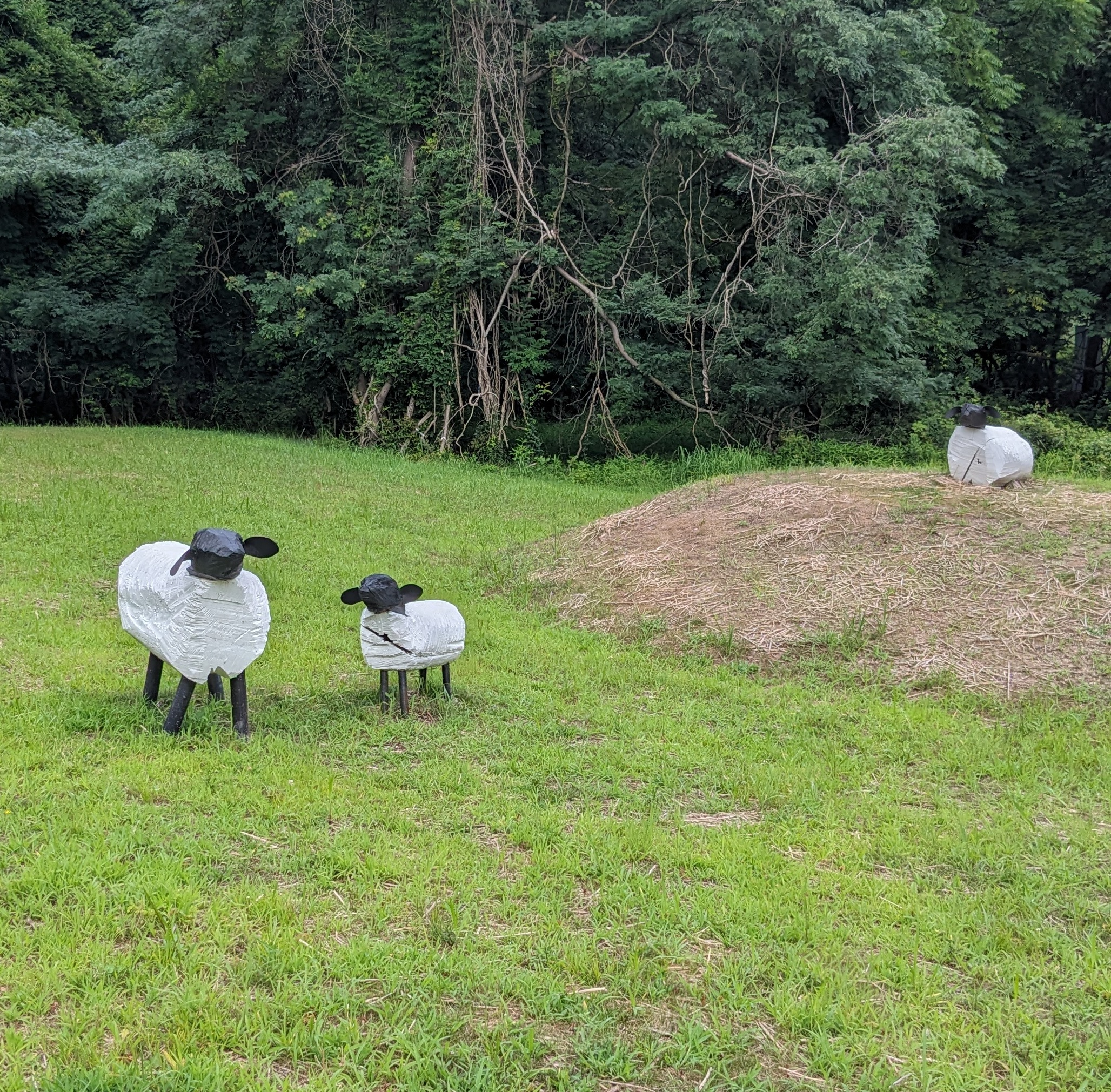
Entering the gate we find a guest cottage, built in 1939. Though this is a relatively small dwelling, it has an architectural relationship with the grand estate house, as it is constructed using the same distinctive brick. Original design sketches show that this structure was initially planned to be somewhat larger than the final finished building.
Interesting Observation: Note the patterned brick surface that was part of a breezeway and garage that have been removed.
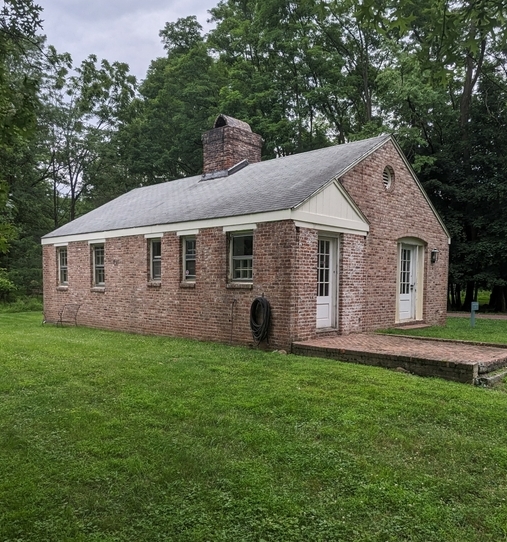
As we follow the trail and bear left we encounter the powerful outdoor installation, "Still Here: Women of the Ramapough Lenape Nation," a series of photographic portraits by artist Lisa Levart. A core mission of Levart's series is to prompt viewers to reflect upon and honor the Lenape people who were the native inhabitants and original stewards of this land, and be reminded that their descendants are still present in the Hudson Valley.
Interesting Observation: Take a moment to observe how nature weaves her way amid - and around - the portraits, making the installation seem fully integrated into nature. The semi-transparent banners allow light and natural ambience to flow through without blocking it.
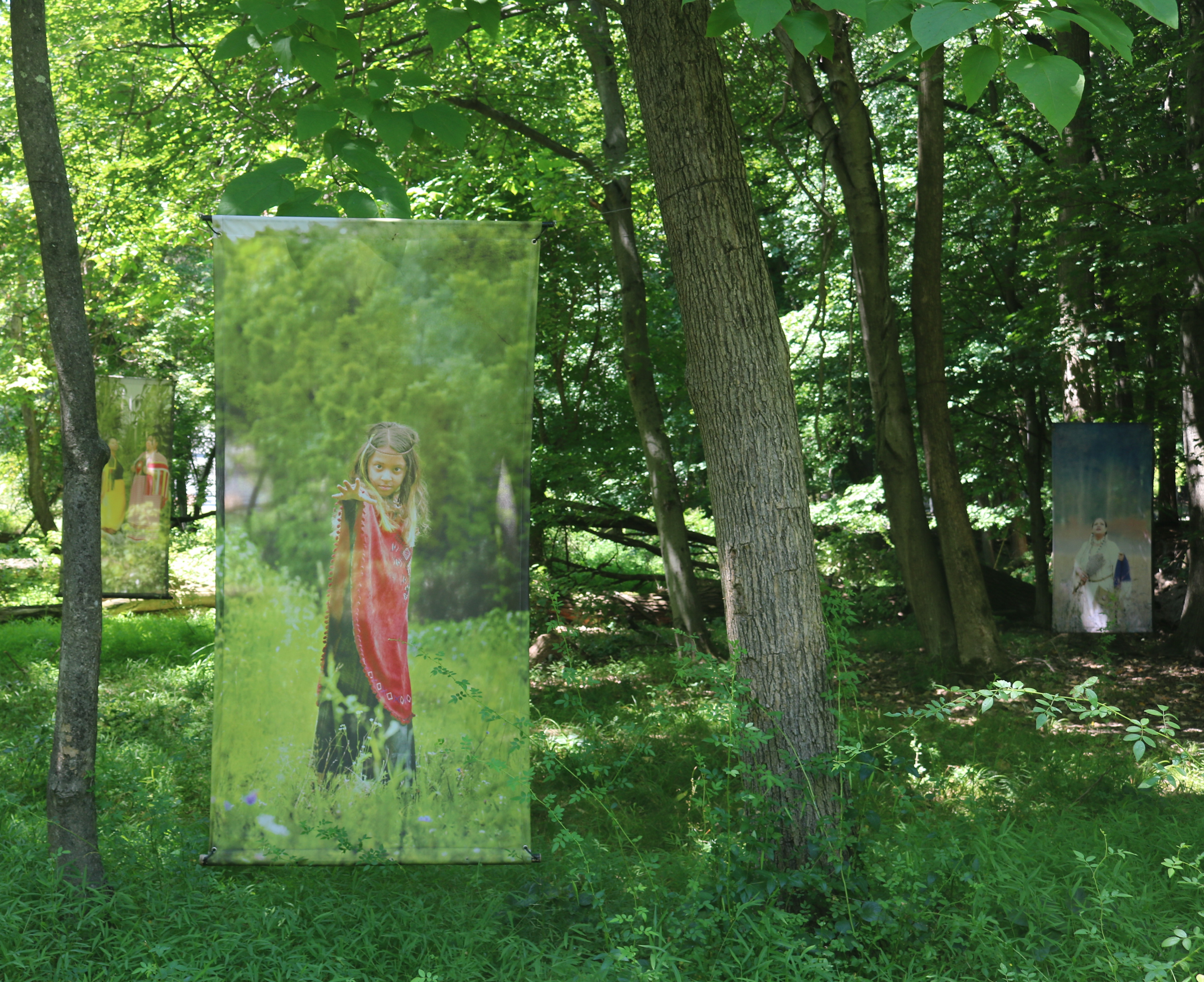
Next, as we continue to follow the winding trail and look to the right into the clearing, we get a glimpse of the installation "Brickhead Huaca", a contemporary work by James Tyler. This piece is a monumental sculpture fashioned from brown and organic colored ceramic and bricks. The work evokes the concept of huaca, signifying a sacred space or spiritual construction.
Interesting Observation: Ponder the abstract nature of this structure and how it manages to merge cultural, geographic, and architectural aspects together.

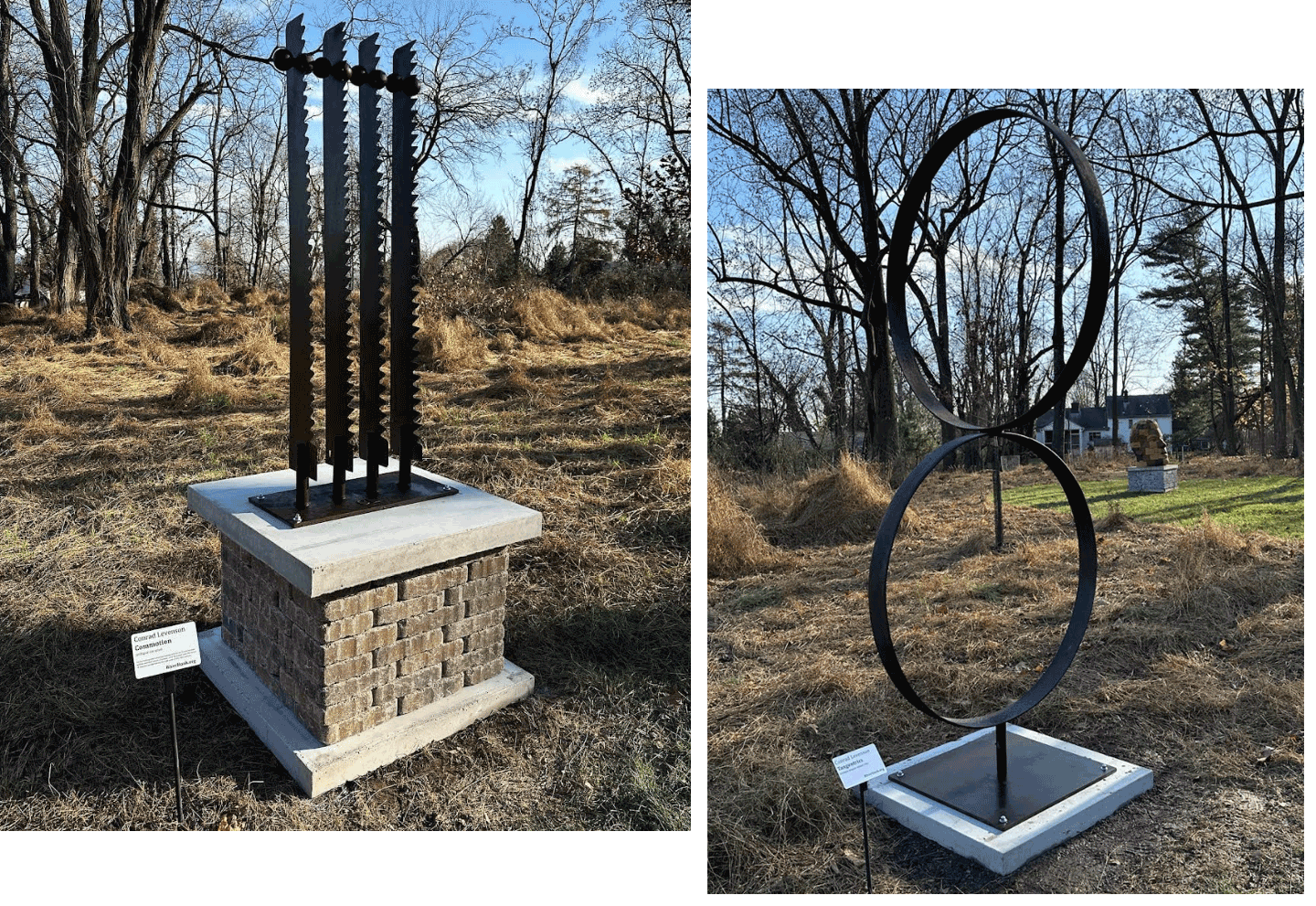
Winding just a bit further down the trail we pass an installation on the left called "Aerie" by Sarah Haviland, made of steel, wire mesh, rebar, and stone, all of which create bold contrasts to the greenery around. Soon on the left you will pass the multi-piece "Yellow Grove" by Mark Attebery. Mark is the Curator of Sculpture for River Hook.
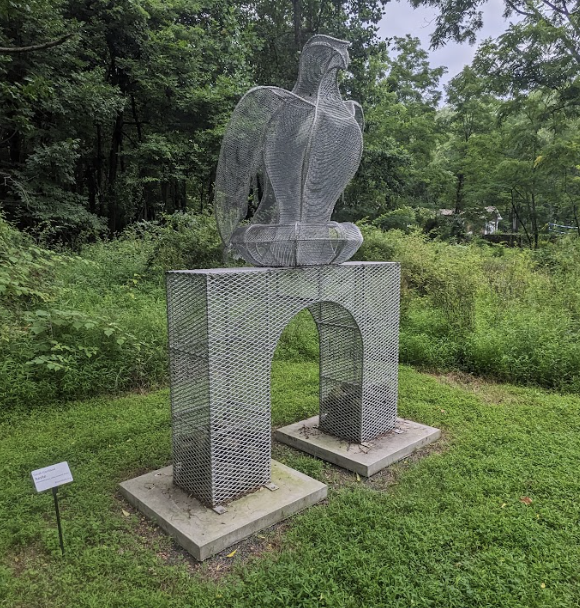
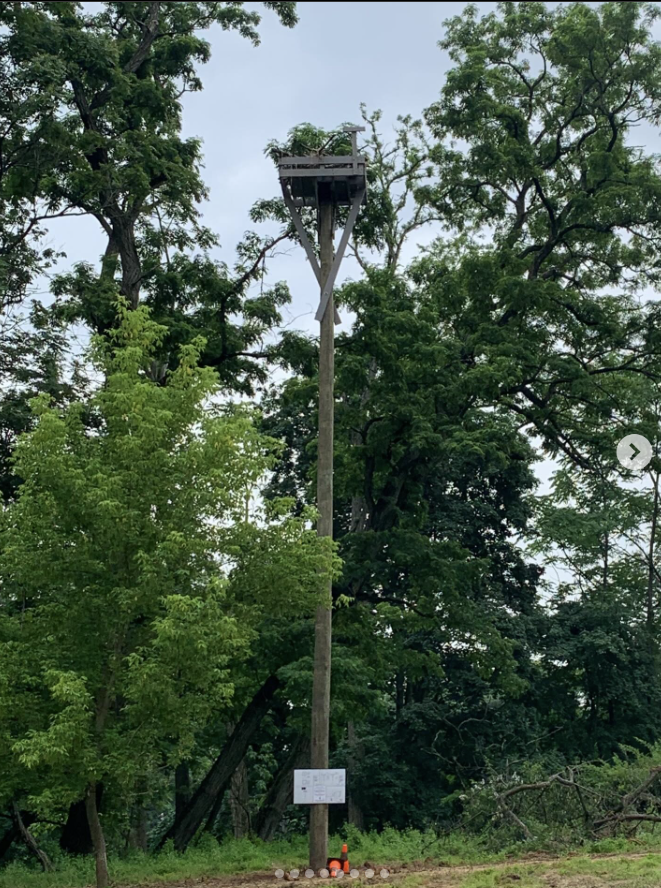
Interesting Observation: In case you were wondering: for ground-level park visitors at a respectful distance, the risk of human-eagle altercations are very minimal. Climbing and lingering beneathe the nest, though, could stress the eagles.
Continuing down the trail, we arrive at the elegant, one-of-a-kind stone stable or "carriage house". This structure, made entirely of fieldstones and Haverstraw brick, is a dramatic sight. It is believed to date back to the mid-19th century, potentially built during the ownership of Theodore Grunenthal, who maintained a thriving farm here during the Civil War era, though this is not for certain. Grunenthal was a farmer at the time (a grape grower!) and also may have built an original house here in a Stick style (a transition style between Gothic Revival and Queen Anne styles). On the other hand, in one line of thinking, Grunenthal's carriage house would likely have been simple. Therefore, a different hypothesis is that the house dates from the later Hilton or Dodge eras, two wealthy owners for whom a more glamorous carriage house makes sense. If you can, look for views inside the structure where the original horse stalls are still visible in the rear of the first floor, offering a direct view into the property's "horse-and-buggy days".
Interesting Observation: Look to the left of the carriage house to spot an antique haying tool still visible, connecting back to River Hook's nearly 300-year history as a farm. Also, looking uphill to the right, you will see a pile of local sandstone blocks, which are the remnants of a mid-19th Century building, now demolished, known as the "Owens Cottage".
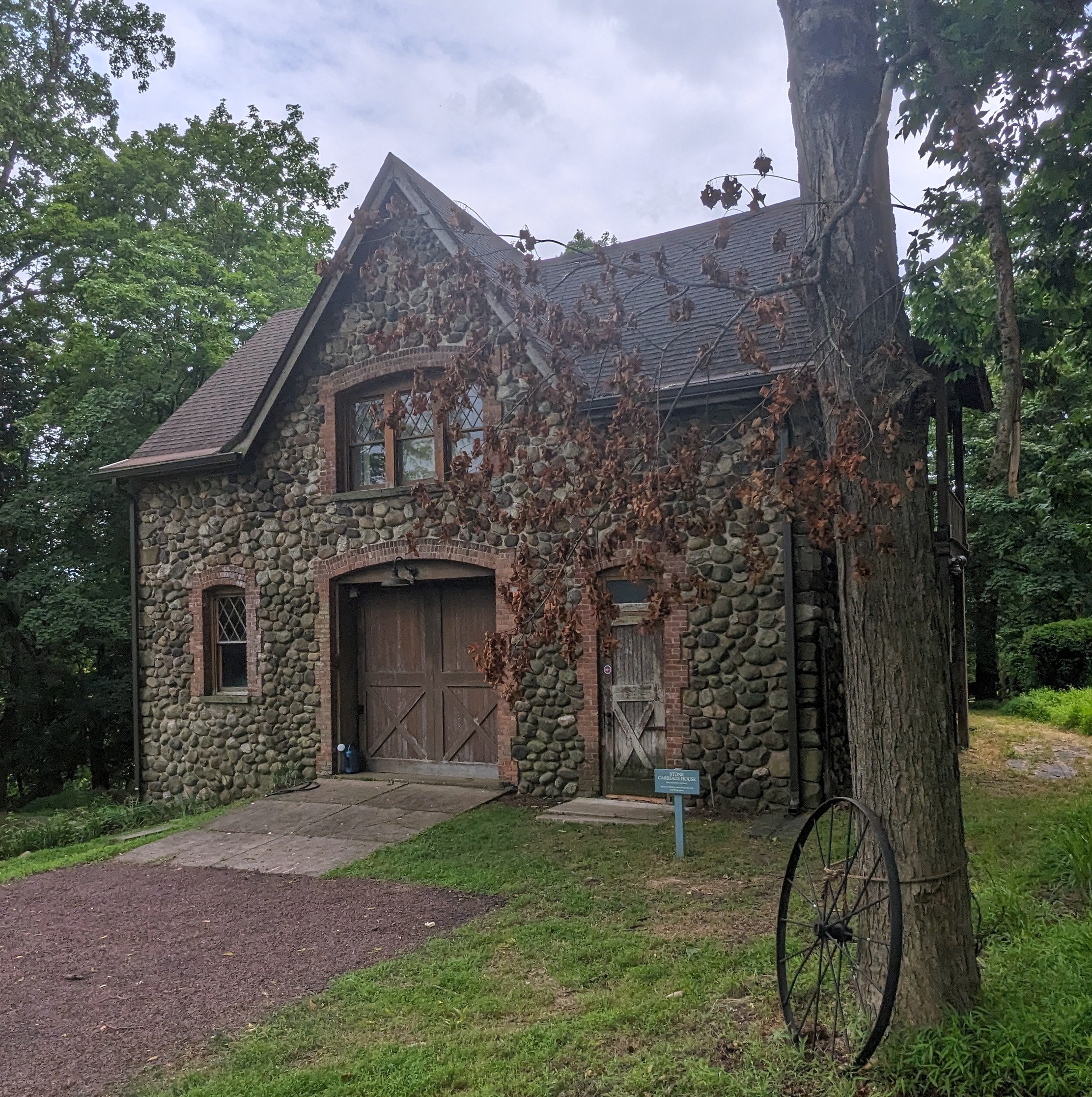
Continuing, we now stand before the primary residence, the Haring house. This approximately 4,000 square foot, narrow, two-story building is a Georgian Revival style (a subset of Colonial Revival style), brick, estate house built in 1934 for William Post Haring, Jr., by New York architect Julius Gregory. Among many other projects, Gregory designed the White Plains Community Church, in White Plains, NY. The Haring house features a multi-layered roofline and massive fireplaces flanking both ends of the slate roof.
Interesting Observation: Although the front of the house faces the uphill meadow to the west, walk around to the eastern side patio (the "back") where you will find an excellent view of the Hudson River, near one of its widest points (called the Tappan Zee).
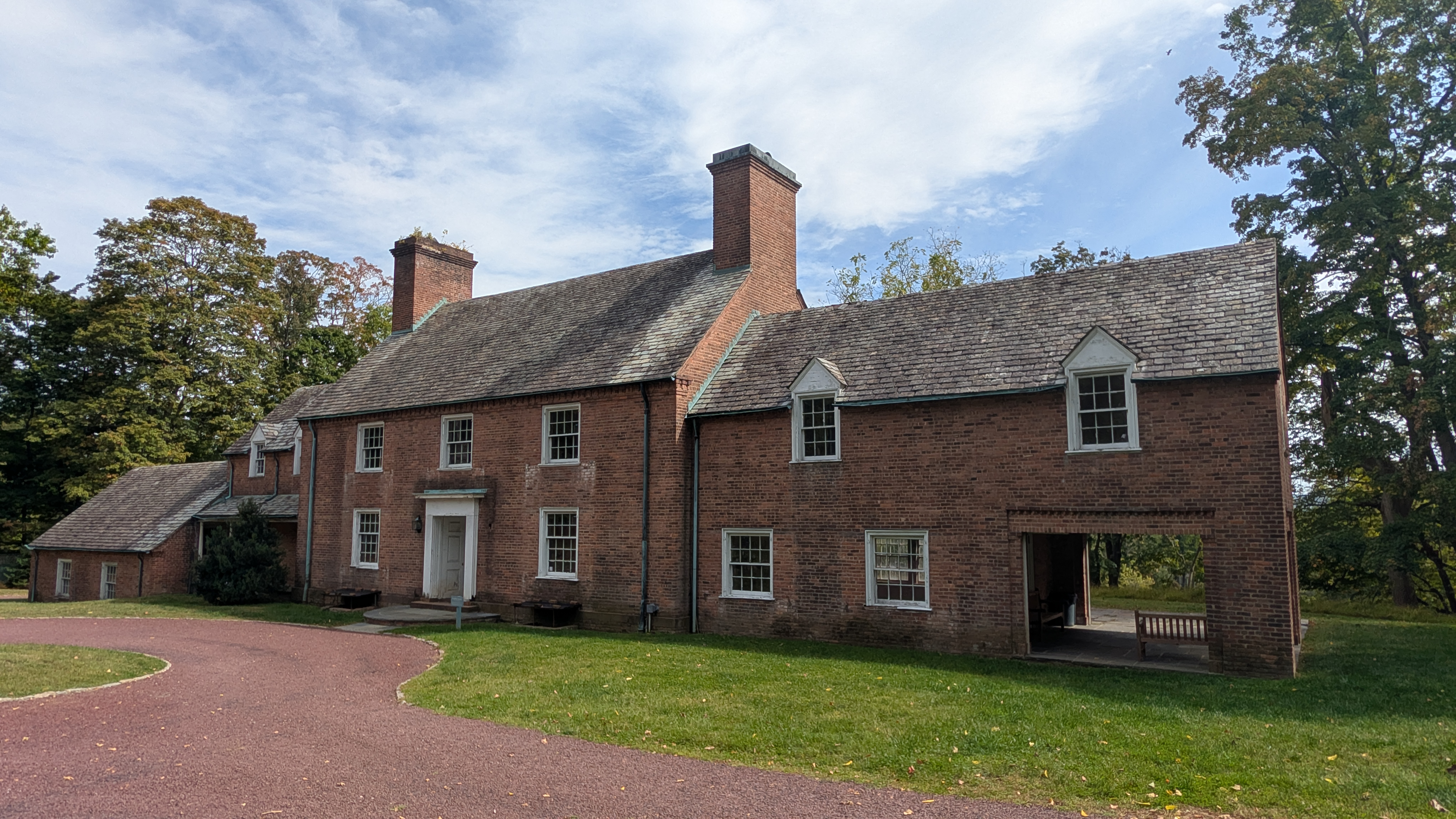
Stopping in the small circular driveway on the west ("uphill") side of the Haring house. Here, in the center of the drive, you can consider the vibrant "Running Man" sculpture, by D. Hornbake, crafted from laurel wood branches and presenting a dynamic, human-form figure in motion. This piece adds an expressive organic element to the River Hook sculpture path.
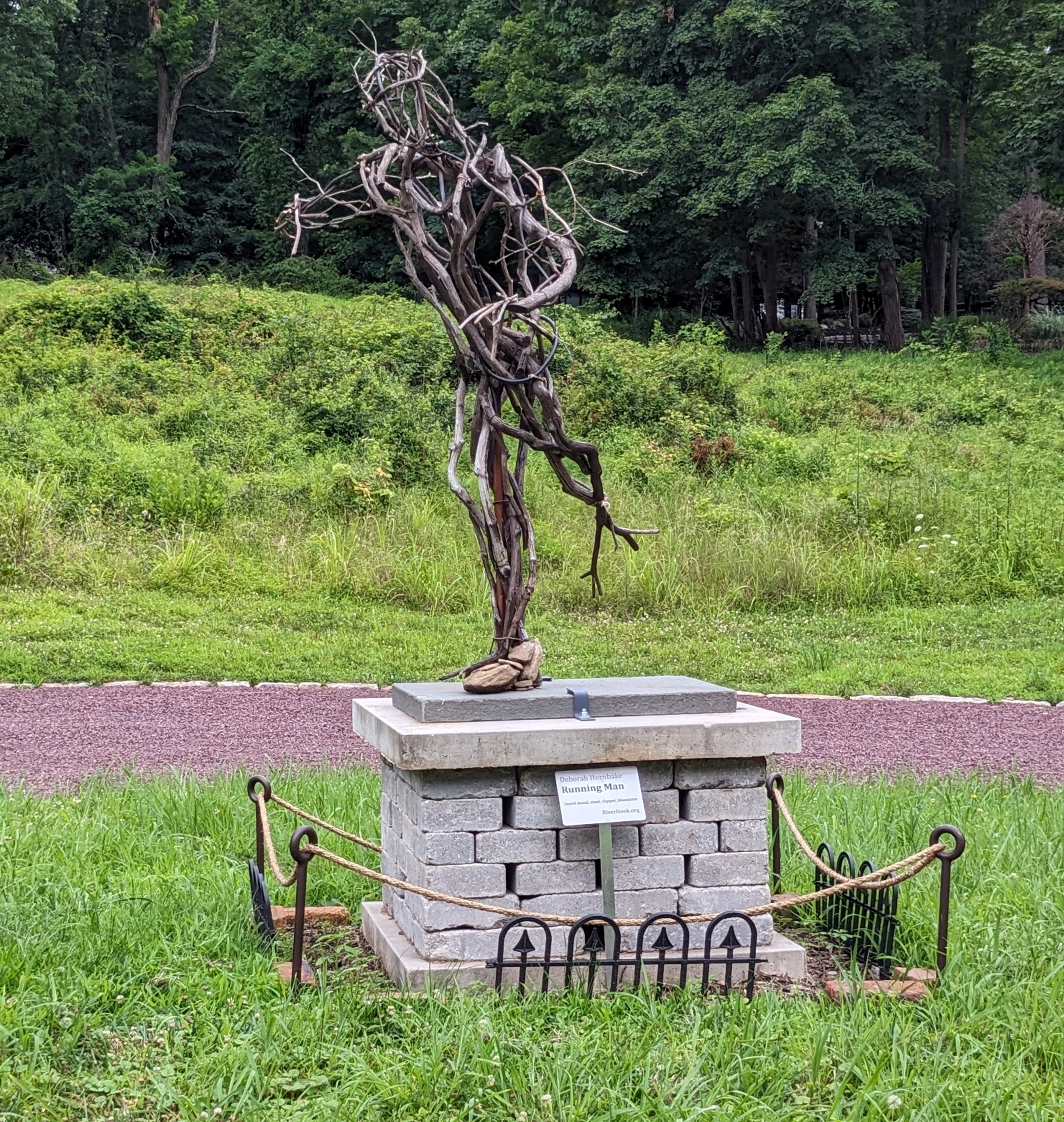
Interesting Observation: Consider the architectural choice of the Haring house: to situate the "front door" on the relatively remote uphill meadow to the west. This allows visitors to experience the spectacular views toward Broadway and the river on the east for the first time after they enter the house.
If you walk around to the other side of the Haring house from your present position, you will encounter the "River Hook Stag" sculpture, by Alberto Bursztyn. This dramatic stag sculpture - standing proudly in the meadows east of the Haring house - is made from reclaimed wood, some of it from the preserve. This work is quite representative of Bursztyn's style.
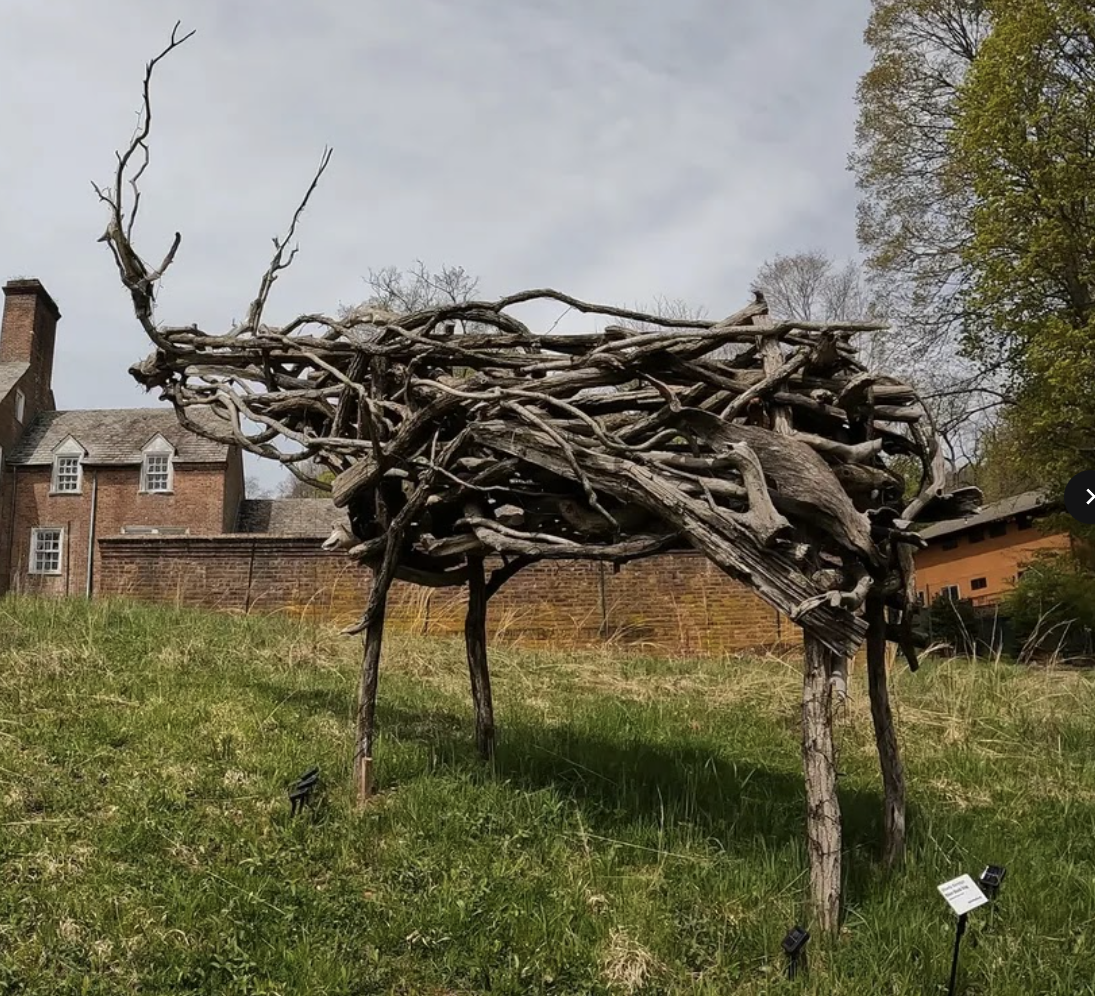
The Tour ends here as you have found your way down the pathway from the Preserve's west entrance towards the east. If you'd like to proceed, you might choose to continue towards the North Broadway entrance. There you will see wildflower meadows and a children's natural play area that features a 19th Century sandstone ice house.
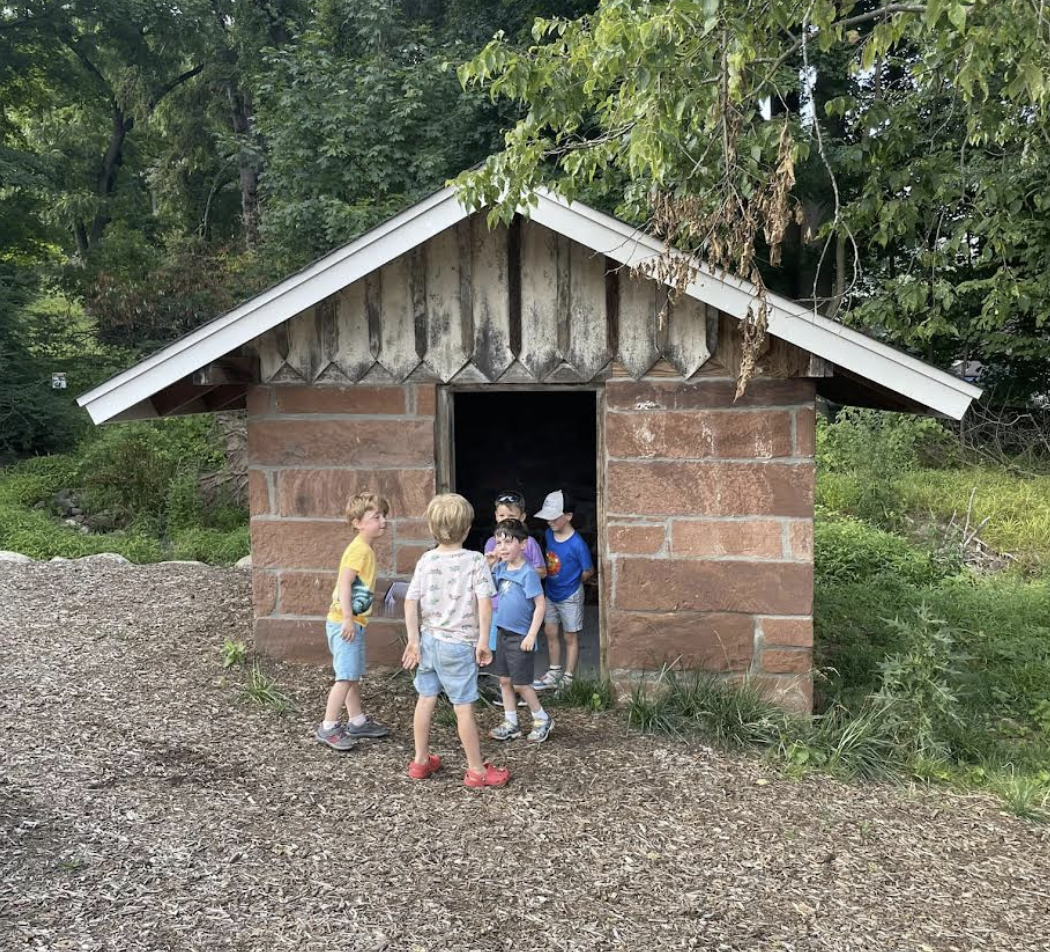
Interesting observation - The ice-house structure was used to store ice blocks which were cut directly from ice on the Hudson River. Blocks were stored in sawdust here, and used year-round.
Visit the play area and ice house if you wish. Otherwise, back-track back up to Midland Avenue and enjoy your day!
Tour credits here.